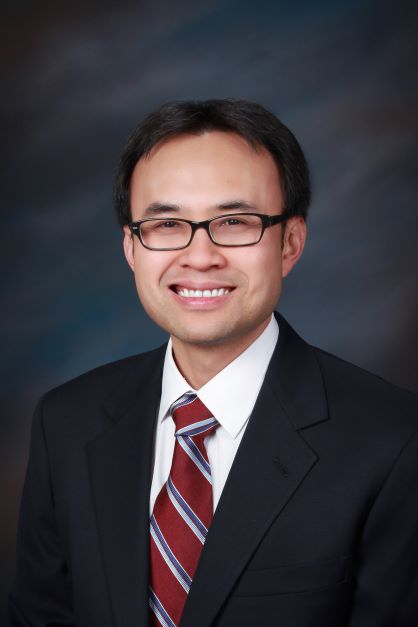Thuan Ong
Welcome to Collective Conversations, a series of discussions aimed at highlighting people and groups working to improve health through better health care systems.
In this conversation, you'll hear from Dr. Thuan Ong and his leadership as Medical Director of the UW Post-Acute Care (PAC) and PAC Clinical Service.
Joy Lee: It's well known in systems and policy communities that post-acute care is a critical focus area for improving health outcomes and health care value. For those who are less familiar, can you describe why that's the case?
Thuan Ong: l think that if any clinician has gone through a residency training program with any healthcare system, you would probably have easily find out that the majority of the large healthcare systems do not have an integrated post-acute care network. So, many of these post-acute care systems – either skilled nursing facilities, home health, assisted living facilities, adult family homes – these are within the post-acute care environment, and many of these organizations are either private companies or they’re nonprofit organization that are totally unowned by the healthcare system. And so, that’s part of the challenge is trying to integrate the care with these organizations that are not truly part of your healthcare organization – they are lumped into the care continuum, but they are nowhere part of within your own health organization. And I think that that is one of the challenges in why post-acute care is such a critical focus area for improving health outcomes. It’s trying to integrate these systems and organizations within the care continuum within the bigger hospitalized setting and also within primary care setting as well.
JL: You are the Medical Director of Post-Acute Care at UW Medicine. Can you share what that entails?
TO: As the Medical Director of Post-Acute Care, there’s two roles that I serve. There’s the medical director for clinical service where we have a collection of nurse practitioners and physicians that serve the clinical care within this post-acute care environment, meaning that they go into skilled nursing facilities currently to provide these transitional care for people who are recently discharged from the hospital. So, I supervise and provide clinical oversight over that group, our post-acute care clinical service.
But then there’s also the UW Medicine Post-Acute Care – that’s where I provide input and strategy on developing innovations associated with post-acute care. And what that usually entails is developing collaborations and partnerships with these community organizations that I have mentioned previously. So, that is what the Medical Director role entails.
JL: I understand that one way that your team tries to improve systems of post-acute care is via a Post-Acute Care Network. Could you explain the network to someone who isn't a systems or PAC expert?
TO: I think if you’ve ever been into a hospitalized setting for example and you leave the hospital, there are some services that you may need just because you’re not fully recovered to your previous functional status at that point in time, and so, some of those post-acute care services are home health services, for example. And that’s where a person or a clinician, a group of clinicians, come into your home and provide skilled care. So, that could be in the sense of a nursing skill of care, or that could be in terms of physical therapy, or occupational therapy skill of care as well. And so, that is one example of a post-acute care. But the other example is if you are debilitated or you have further functional limitations that prevent you from going directly to home or what your previous living environment was, then you can utilize also skilled nursing facilities as well, and that’s where you would obtain short-term rehabilitation. And so, what we did for our network was that we found organizations within the community that provided these services, and home health and also skilled nursing facilities. People who would adhere to our policies also meet our standards are care, and also would address our mission as well – our mission for the University of Washington. So, we organized and provided the infrastructure to create this network and bring these individuals together on a routine and periodic basis to address quality care issues and any issues that may arise within our patients that are discharged from our hospitals, and also patients that may be referred from our clinics to, for example, to home health.
JL: How are partners continually evaluated after joining the network?
TO: Using skilled nursing facilities as an example, these facilities are routinely audited by the state government and it’s a routine part of their process. And so, many individuals are aware of the star-rating system, so this is part of a five-star rating system that is then reported and developed by CMS (Centers of Medicare and Medicaid) that report this out to the general public. And so, anyone could access this information on the internet, nursinghomecompare.gov for example. So, this information is used to evaluate the quality of a nursing home. And so, that is one broad tool that we use are the results of these audits and also the results of these quality indicators that are reported to the federal government – this star-rating system.
The other thing that we use to continuously evaluate the function of our network is monitoring the types of patients that are accepted and then admitted to our nursing facilities within our network. We also monitor the number. And then the last thing that we monitor, and I think that this is probably one of the more important things, is the engagement. Having a successful partnership really depends on that engagement and having that engaged partner that comes to the table to continuously provide constructive feedback on how we could be better as a health system as well as a better partner. And that I think is probably the biggest thing that we measure that it isn’t strictly a quantitative value, but following and addressing the engagement that we use in nursing homes and their administrators and their staff at.
JL: What are a few key initiatives you’re working on?
TO: Right now, our group is working with a value-based purchasing group. Part of the University of Washington, we are working on establishing better care pathways for our MSSP patients, so this is the Medicaid Shared Savings Program that they are working on. This is the first year that UW Medicine with three hospitals have entered into the MSSP program (Valley Medical Center is separate – they’ve been in the MSSP program for a while now, but the other three hospitals have entered into a MSSP program as of this year), so that’s one of the big initiatives that we are working on.
JL: One of our focus areas on the health systems team is equity. How are you and your team thinking about equity in PAC outcomes, and how to use PAC programs to serve different communities and populations, including those that have been historically marginalized?
TO: I think that is such an important question, particularly nowadays. And many of these things are coming to the forefront and addressing health equity and also the disparity in care as well. What we did for post-acute care when we created our network, we used broad measures. One of the broad measures that we used was requiring our partners who wanted to be part of our network to actually accept patients that were on Medicaid – so these are Medicaid patients where we use that as a surrogate for lower socioeconomic status, and not truly cherry-picking or selecting patients who are well-funded, but actually accepting patients who have challenges in access to post-acute care services. And that’s something that we have our partners adhere to. I can share that when we had created our network and we went through our embedding system and invited other facilities and other organizations to our network, there were many organizations and facilities that actually declined purely based upon the fact that they did not want to adhere to accepting a certain number of patients who are Medicaid-funded. That’s one way.
I think the other way that we are also addressing access and equity is that we have been very creative in thinking of innovations within this space. And so, we helped Harborview Medical Center create a program that is called SPATCH (Sponsoring Patient Access to Care at Home) – this is purely for home care, not home health, not skilled nursing facility care, this is for people who need additional support with their visit activities in daily living or intermittent activities in daily living. And historically, for home care, it has been solely private pay. So, you have to pay out-of-pocket, or you had some sort of long-term care insurance that will fund for home care. And so, as one can see that that can actually set up equity issues – if you have enough money, then you can afford it, then you have access to this other level of care such as home care. And so, working at Harborview and many of our other hospitals experienced similar situations, is that many of our patients don’t have that access to that level of care, but they could benefit from that and where that they wouldn’t have to access or use a skilled nursing facility or move to the next level of care if that was available for a temporary period of time. And so, through working with Harborview, we created a program called SPATCH in that the hospital sponsors this home care for these patients for a temporary period of time, and that is meant to support them while they are fully recovering. And all the other services, particularly if they go home, such as home health, is also a viable option for them to utilize, whatever payor that they have at that point in time.
JL: Thank you so much for your time today in sharing more about the Post-Acute Care Network with us.
TO: Thank you for the invitation.




